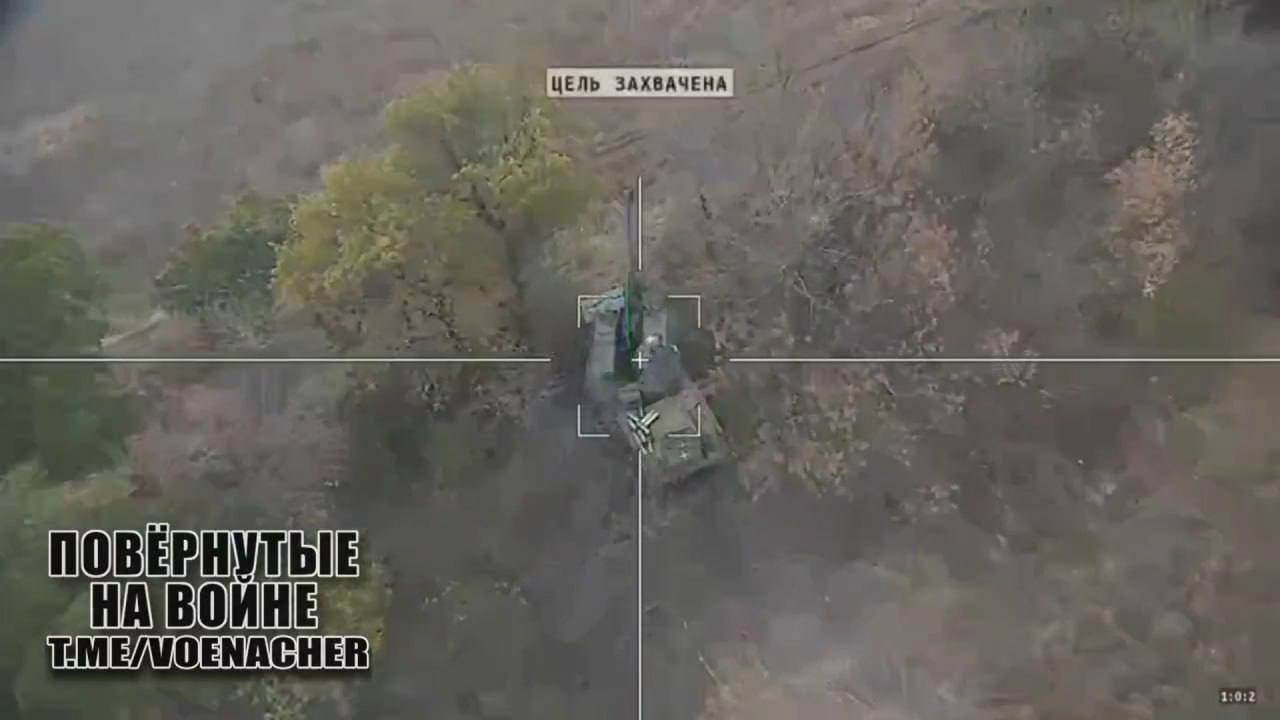From US Abrams To German Leopards – Russia Develops ‘Neural Network’ That Can Identify Big Weapons In Warzone?

Russian scientists have reportedly developed a technology to help identify and differentiate between enemy installations and equipment.
To be used on drones, the NAKA technology has been described as a “neural network” that can spot European and US systems like the Leopard main battle tank (MBT) and the Bradley infantry fighting vehicle (IFV).
Moscow has been accelerating indigenous drone technology and producing homegrown UAV components and electronics since 2022 after the war exposed its weaknesses in the sector.
President Vladimir Putin, too, has mentioned artificial intelligence (AI) and quantum technology as focus areas by giving a fillip to the domestic technology industry.
Interestingly, it had developed similar technology for its Lancet-3 loitering munitions and the Marker unmanned ground vehicle (UGV), besides a system that can control UAVs with “brain impulses.”
It, however, appears that these efforts are separate, undertaken by individual state research institutes, universities, and private companies, and are yet to be integrated into a combined endeavor.
‘Neural Network’ that Can Identify Enemy Tanks
RIA Novosti quoted Hardberry-Rusfactor director Alexey German as saying, “NAKA makes it possible to accurately identify enemy objects and equipment in the special operation zone, including Leopard tanks, Bradley infantry fighting vehicles, and any other vehicles.”
The technology is based on a program the company wrote that acts as a “neural network,” operating on the video feed it receives from UAV cameras.
“For example, an airplane transmits video to the operator’s console, and the program loaded into the console highlights a certain area of the terrain in green and writes: “This is a Leopard, and this is a Bradley with a probability of 85%,” showing the exact coordinates of its location.

This neural network also has “peaceful” civilian uses “in the future,” including “agriculture” and “searching for lost animals scattering across vast territories.”
Interestingly, Hardberry-Rusfactor, founded in 2013, has also developed a tilt-rotor drone called “Lovkiy.” The UAV can “fly faster than all the helicopters operating in the special operation zone.
These “helicopters” can be assumed to be quadcopters or other push-propeller configuration UAVs, not actual choppers, which are larger and have more powerful engines.
It can reach speeds 2.5 times faster (up to 200 kilometers per hour) and longer (up to 1.5 hours) than all other Russian drones being used in the “Special Military Operation (SMO) zone today.”
Russia’s Other AI, Neural Network & Machine Learning Military Tech
Neural networks are a part of the Machine-Learning (ML) branch of AI, designed to mimic the functioning of the human brain.
They are usually the underlying science behind technologies like image recognition, which is also the core role of the NAKA – to identify different makes of enemy weapons from the air.
As a previous EurAsian Times report noted about autonomous Lancet-3 drones, the loitering munition itself ‘locked on’ to a Czech-made RM-70 tube rocket artillery and a DANA self-propelled gun (SPG) in strikes late in October last year.
Like the NAKA (described above to mark the target in green lines), the feed from this autonomous version of the Lancet too briefly displayed green lines while diving down to hit the Czech weapons in its nose camera feed.
Even the Marker UGV was reported to have a similar system that can be interpreted only as an Artificial Intelligence (AI)-Machine Learning (ML) technology.
In ML, a system is taught and corrected to improve its autonomous operation progressively. The Marker has been designed to “identify friendly vehicles and soldiers through camouflage patterns on their combat uniforms and insignia patches.”

It has “adaptive” and “artificial intelligence,” which the developers are “teaching different types of goals.” This can be inferred to be an ML feature where an AI’s autonomous operation gradually becomes error-free through periodic human interventions.
This might involve electronically making changes in the computer, rewriting the software or the algorithm, ‘communicating’ with the system in code, or all of the above.
- Questions and Answers
- Opinion
- Story/Motivational/Inspiring
- Technology
- Art
- Causes
- Crafts
- Dance
- Drinks
- Film/Movie
- Fitness
- Food
- Jeux
- Gardening
- Health
- Domicile
- Literature
- Music
- Networking
- Autre
- Party
- Religion
- Shopping
- Sports
- Theater
- Wellness
- News
- Culture
- War machines and policy

